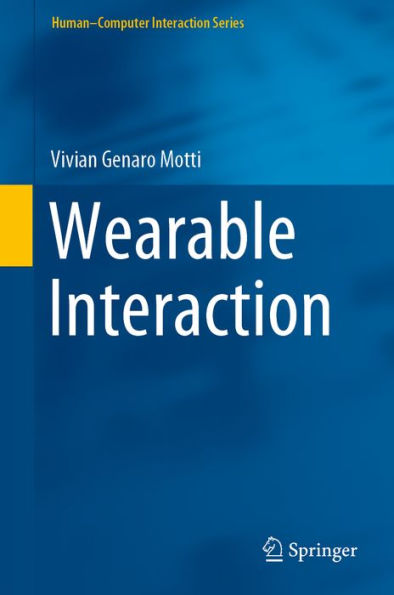This book offers the reader a comprehensive view of the design space of wearable computers, cutting across multiple application domains and interaction modalities. Besides providing several examples of wearable technologies, Wearable Interaction illustrates how to create and to assess interactive wearables considering human factors in design decisions related to input entry and output responses. The book also discusses the impacts of form factors and contexts of use in the design of wearable interaction. Miniaturized components, flexible materials, and sewable electronics toolkits exemplify advances in technology that facilitated the design and development of wearable technologies.
Despite such advances, creating wearable interfaces that are efficient is still challenging. The new affordances of on-body interfaces require the consideration of new interaction paradigms, so that the design decisions for the user interaction take into account key limitations in the interaction surfaces of wearables concerning input entry, processing power for output responses, and in the time and attention that wearers dedicate to complete their interaction. Under such constraints, creating interfaces with high usability levels is complex. Also, because wearables are worn continuously and in close contact with the human body, on-body interfaces must be carefully designed to neither disturb nor overwhelm wearers. The context of use and the potential of wearable technologies must be both well understood to provide users with relevant information and services using appropriate approaches and without overloading them with notifications.Wearable Interaction explains thoroughly how interactive wearables have been created taking into account the needs of end users as well as the vast potential that wearable technologies offer. Readers from academia, industry or government will learn how wearables can be designed and developed to facilitate human activities and tasks across different sectors.
This book offers the reader a comprehensive view of the design space of wearable computers, cutting across multiple application domains and interaction modalities. Besides providing several examples of wearable technologies, Wearable Interaction illustrates how to create and to assess interactive wearables considering human factors in design decisions related to input entry and output responses. The book also discusses the impacts of form factors and contexts of use in the design of wearable interaction. Miniaturized components, flexible materials, and sewable electronics toolkits exemplify advances in technology that facilitated the design and development of wearable technologies.
Despite such advances, creating wearable interfaces that are efficient is still challenging. The new affordances of on-body interfaces require the consideration of new interaction paradigms, so that the design decisions for the user interaction take into account key limitations in the interaction surfaces of wearables concerning input entry, processing power for output responses, and in the time and attention that wearers dedicate to complete their interaction. Under such constraints, creating interfaces with high usability levels is complex. Also, because wearables are worn continuously and in close contact with the human body, on-body interfaces must be carefully designed to neither disturb nor overwhelm wearers. The context of use and the potential of wearable technologies must be both well understood to provide users with relevant information and services using appropriate approaches and without overloading them with notifications.Wearable Interaction explains thoroughly how interactive wearables have been created taking into account the needs of end users as well as the vast potential that wearable technologies offer. Readers from academia, industry or government will learn how wearables can be designed and developed to facilitate human activities and tasks across different sectors.

Wearable Interaction

Wearable Interaction
eBook (1st ed. 2020)
Related collections and offers

Product Details
| ISBN-13: | 9783030271114 |
|---|---|
| Publisher: | Springer-Verlag New York, LLC |
| Publication date: | 01/01/2020 |
| Series: | Human-Computer Interaction Series |
| Sold by: | Barnes & Noble |
| Format: | eBook |
| File size: | 15 MB |
| Note: | This product may take a few minutes to download. |
